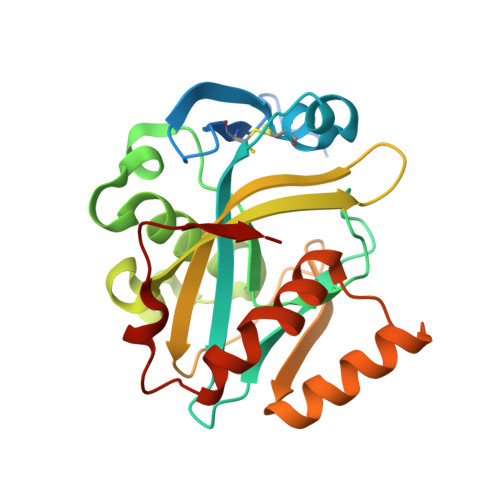Crystal structures of human IPP isomerase: new insights into the catalytic mechanism
Zhang, C., Liu, L., Xu, H., Wei, Z., Wang, Y., Lin, Y., Gong, W.(2007) J Mol Biol 366: 1437-1446
- PubMed: 17137593
- DOI: https://doi.org/10.1016/j.jmb.2006.10.092
- Primary Citation of Related Structures:
2DHO, 2I6K - PubMed Abstract:
Type I isopentenyl diphosphate (IPP): dimethylally diphosphate (DMAPP) isomerase is an essential enzyme in human isoprenoid biosynthetic pathway. It catalyzes isomerization of the carbon-carbon double bonds in IPP and DMAPP, which are the basic building blocks for the subsequent biosynthesis. We have determined two crystal structures of human IPP isomerase I (hIPPI) under different crystallization conditions. High similarity between structures of human and Escherichia coli IPP isomerases proves the conserved catalytic mechanism. Unexpectedly, one of the hIPPI structures contains a natural substrate analog ethanol amine pyrophosphate (EAPP). Based on this structure, a water molecule is proposed to be the direct proton donor for IPP and different conformations of IPP and DMAPP bound in the enzyme are also proposed. In addition, structures of human IPPI show a flexible N-terminal alpha-helix covering the active pocket and blocking the entrance, which is absent in E. coli IPPI. Besides, the active site conformation is not the same in the two hIPPI structures. Such difference leads to a hypothesis that substrate binding induces conformational change in the active site. The inhibition mechanism of high Mn(2+) concentrations is also discussed.
Organizational Affiliation:
National Laboratory of Biomacromolecules, Institute of Biophysics, Chinese Academy of Sciences, Beijing, 100101, PR China.

















